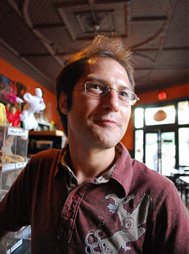About Joe
Over 400 hours Orthopedic massage and Myofascial release training I have been an orthopedic massage therapist since 2008, and am dedicated to bringing my clients real change in their bodies and reduction of pain. More than just general relaxation, I use advanced techniques to assess the source of pain/ impairment, and then work with the body’s own reflexes and healing mechanisms to help return the tissue to health and free movement that is everyone’s birthright. I am also a yoga teacher and voracious student of kinesiology (the study of how the body moves). I use my knowledge of postural alignment and functional movement patterns to educate my clients and give them the power to keep them body aware and pain free long after our session. Some of the techniques I am trained in are:Myofascial release: Fascia is the continuous web of connective tissue that surrounds every muscle, bone, and organ in the body. Just like a snag in a sweater, tightness or adhesions (the sticking of 2 layers together) in one part of the body can transfer tension to many other parts of the body. Myofascial release is the study of the map of these connections, allowing me to trace patterns of tension through the body and release it at key points. I often focus on the seams (septums) between muscles, or on the sheets of tissue covering the muscle. The sensation is not as “intense” as classic deep tissue, but has surprisingly long lasting results. Myofascial separation: This is a much more aggressive version of myofascial release that actually pulls “stuck” layers of fascia apart. All muscles need to move independently, but daily overuse patterns allow collagen fiber to form between fascial layers, forming an adhesion. Targeted pressure and careful range of motion can separate these layers, giving surprising increases in range of motion. Active Engagement: The heart of my practice. I guide the client through specific movements while applying pressure to key structures, causing both physical softening to the tissue, and a cascade of reflexes that help reset muscles to a state of health. Neuro Muscular Technique: This is the classic “knot busting” most lay people are familiar with. Knots, or trigger points, are painful, tight bunches of muscle, often at predictable locations. Just the right repeated pressure can give immediate relief. I consider trigger points a symptom rather than cause of impairment, however, and use all my other techniques to prepare the tissue so that trigger point releases can have lasting effect. Deep Tissue Sculpting: All of my therapy is tied together by classic compression, kneading, and gliding. I use my anatomical knowledge to guide soft tissue back to healthy alignment. Often all the body needs is the simplest reminder, and conscious touch. |

 Certified Orthopedic Massage Therapist
Certified Orthopedic Massage Therapist